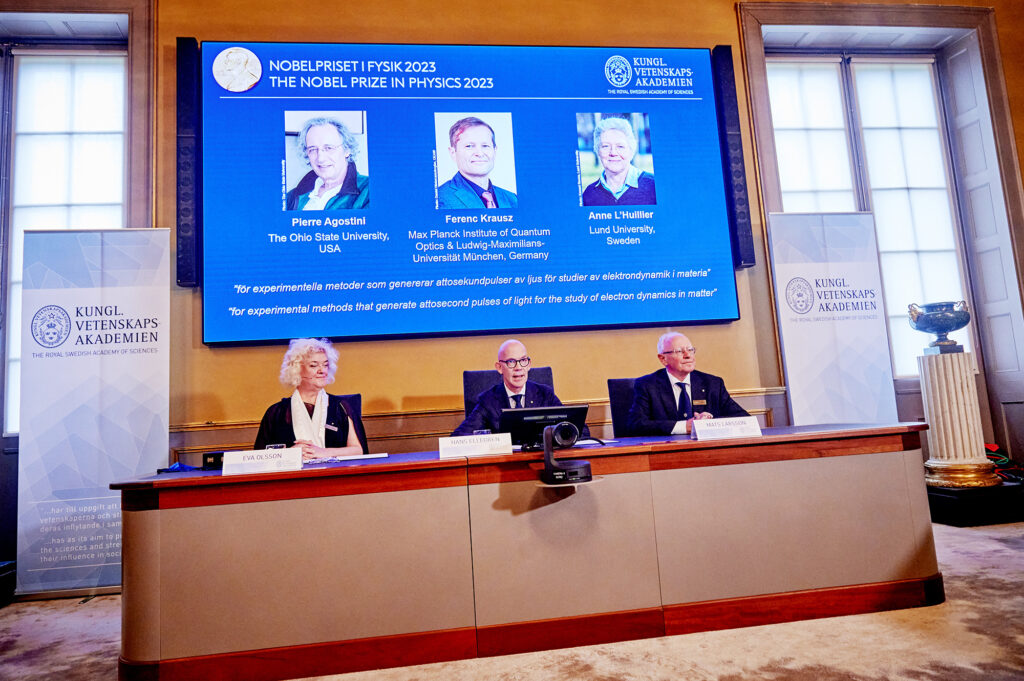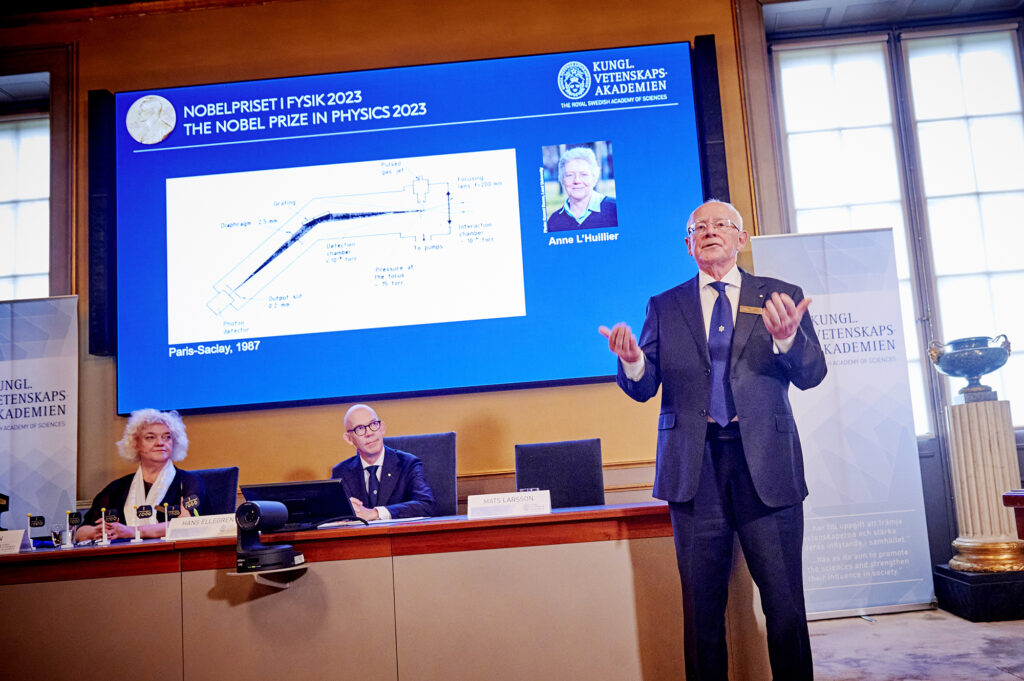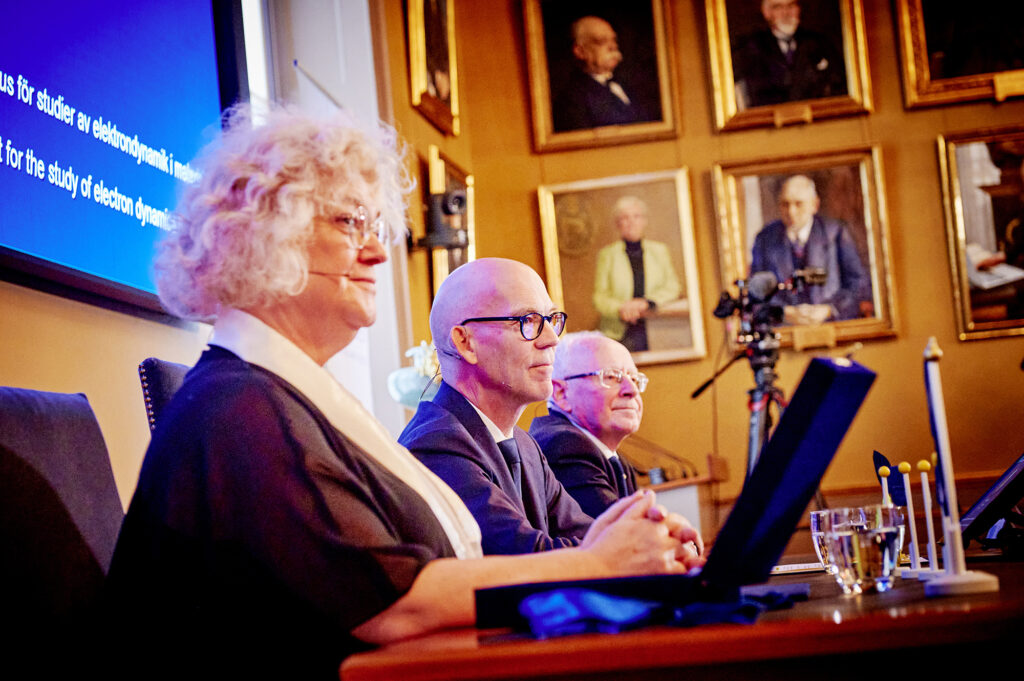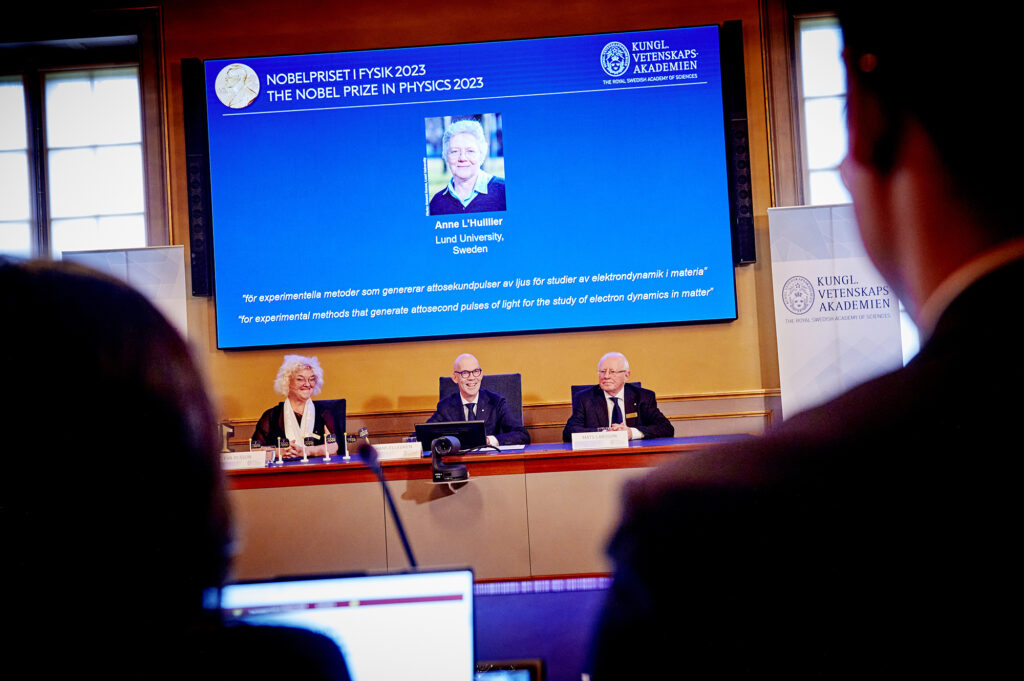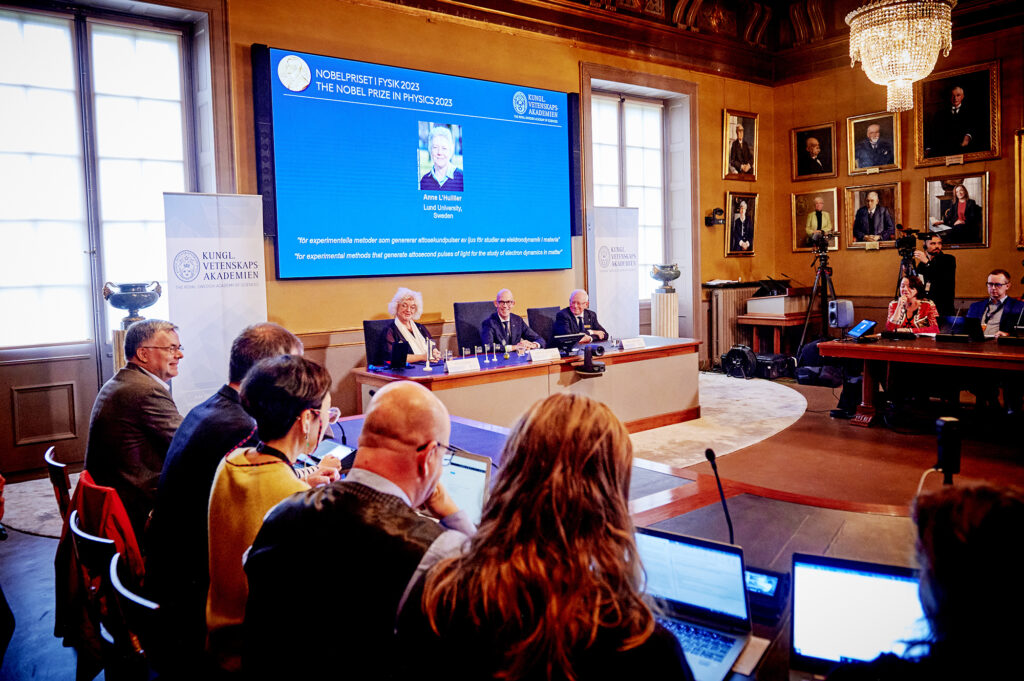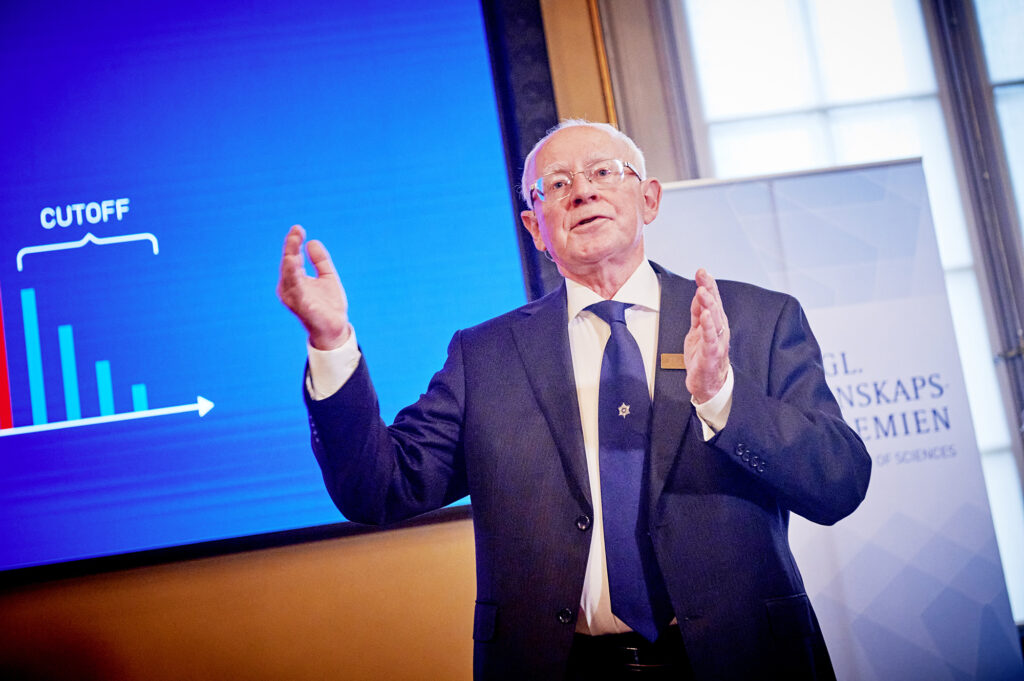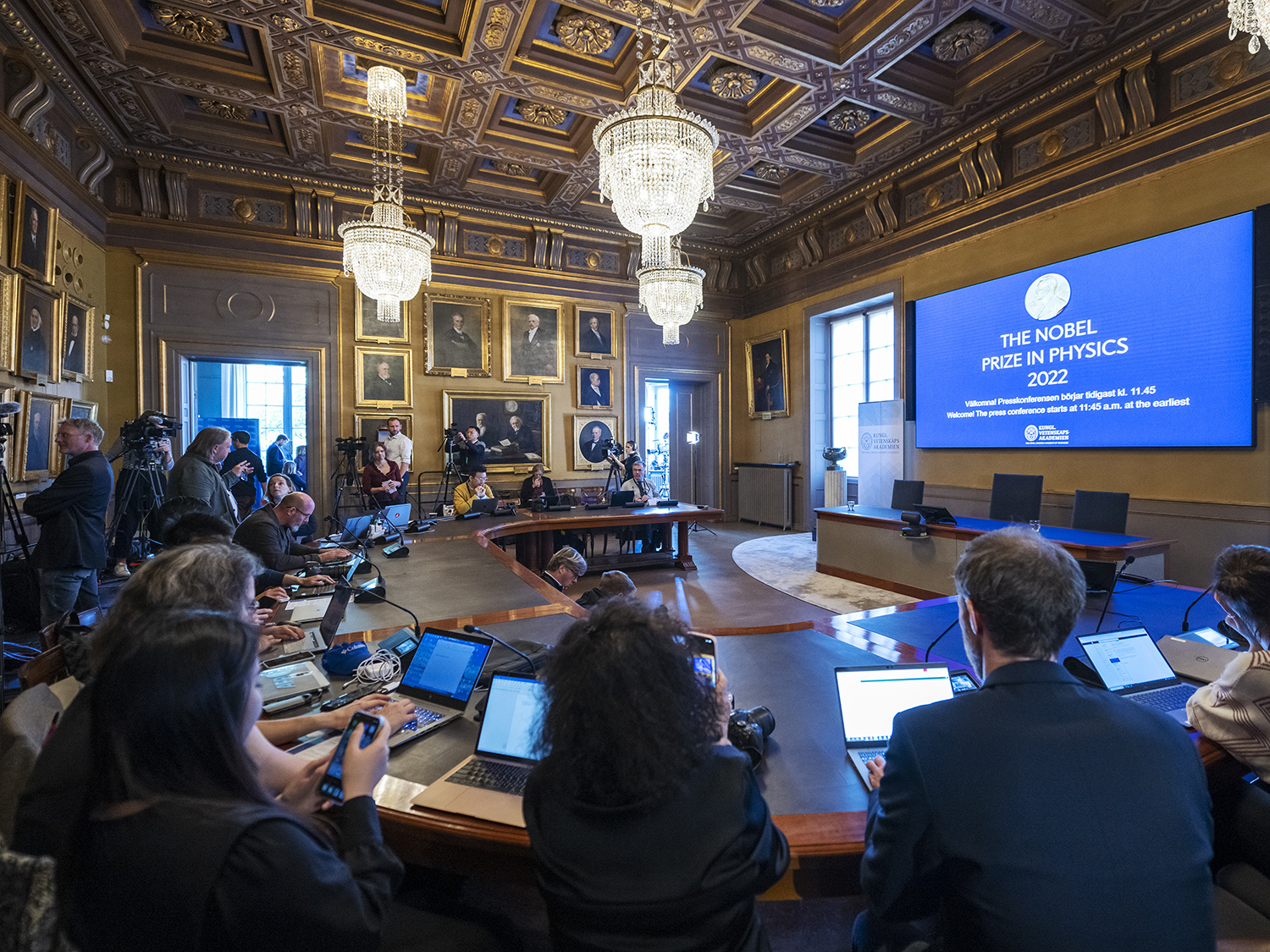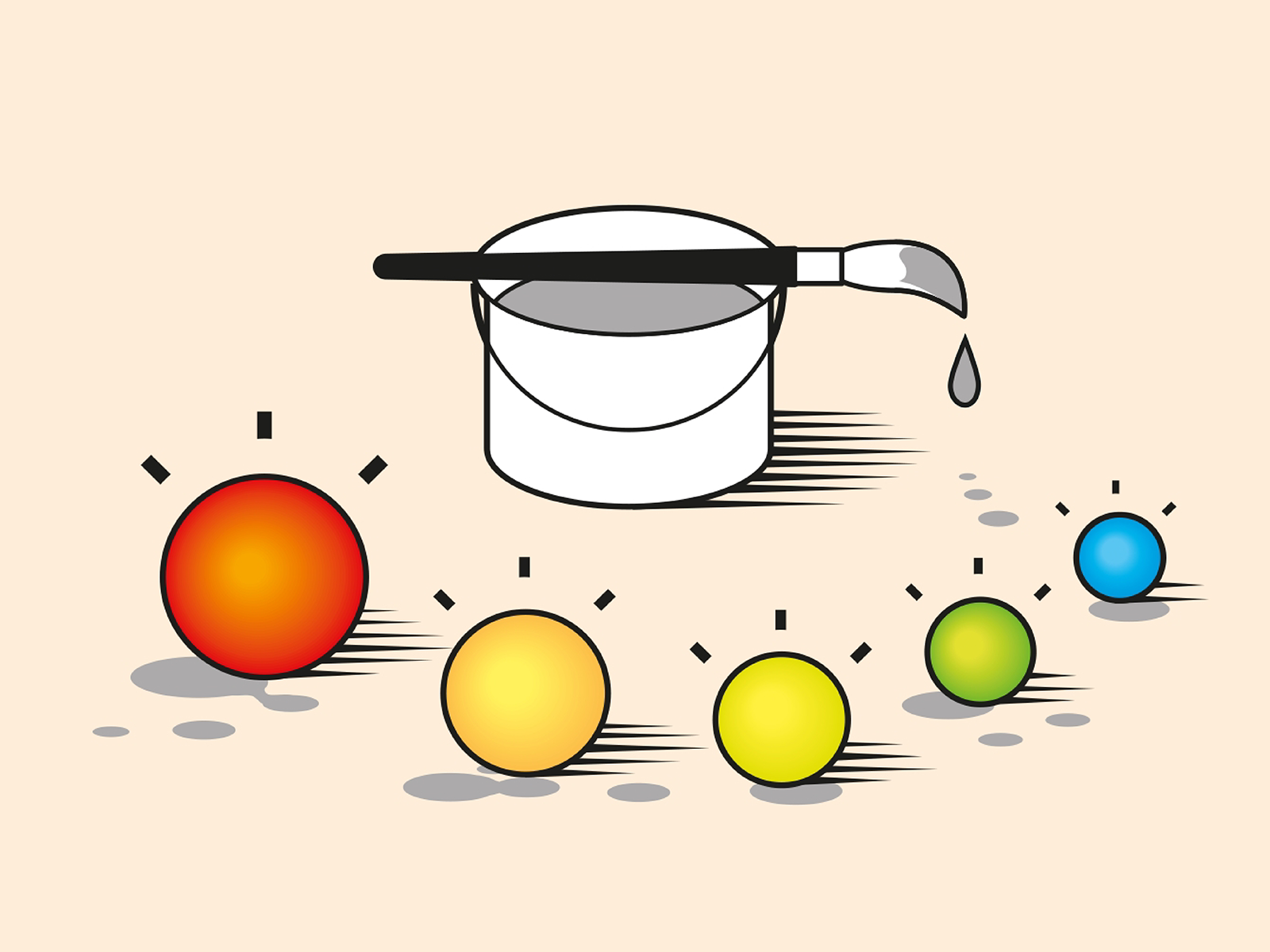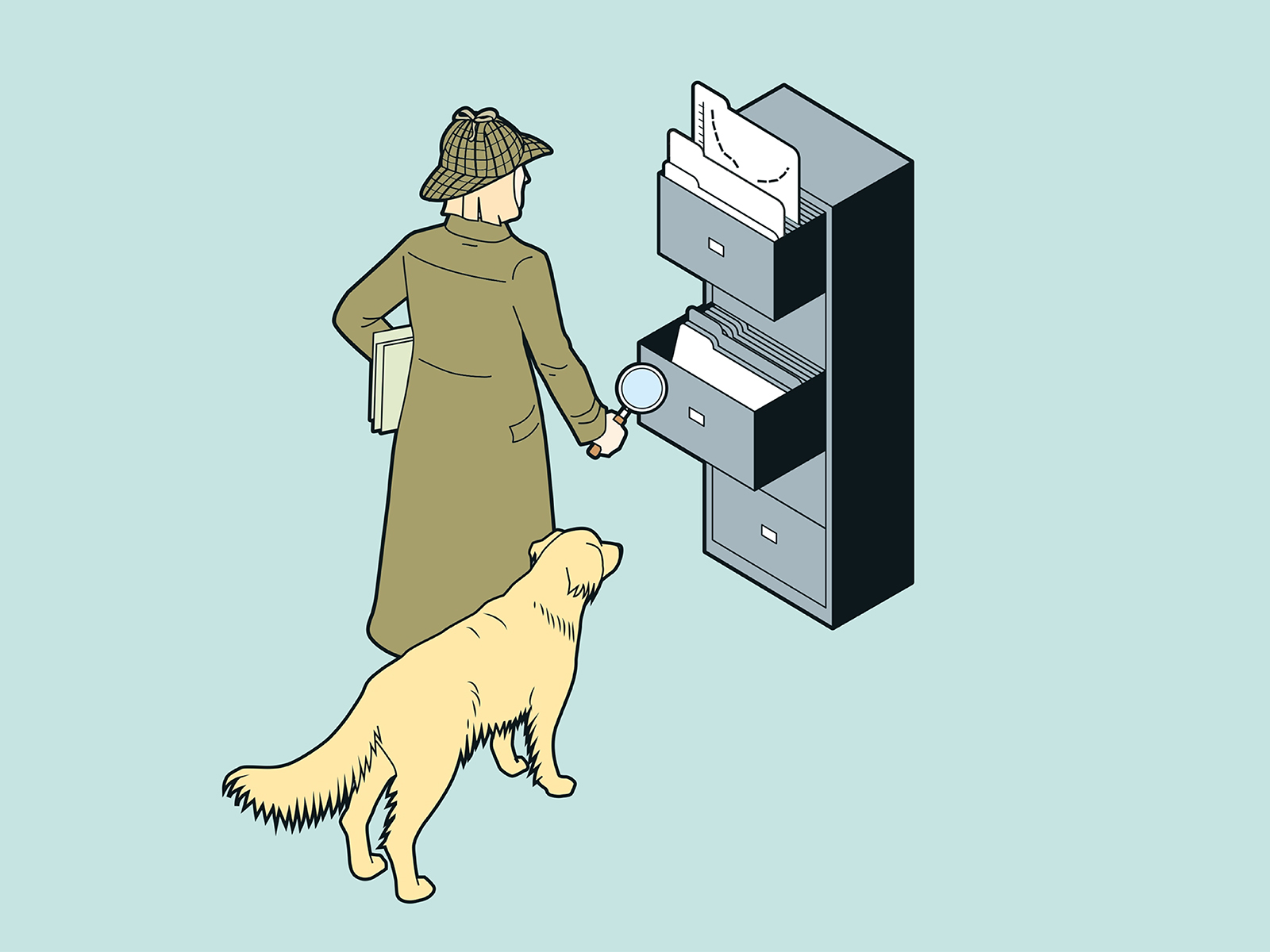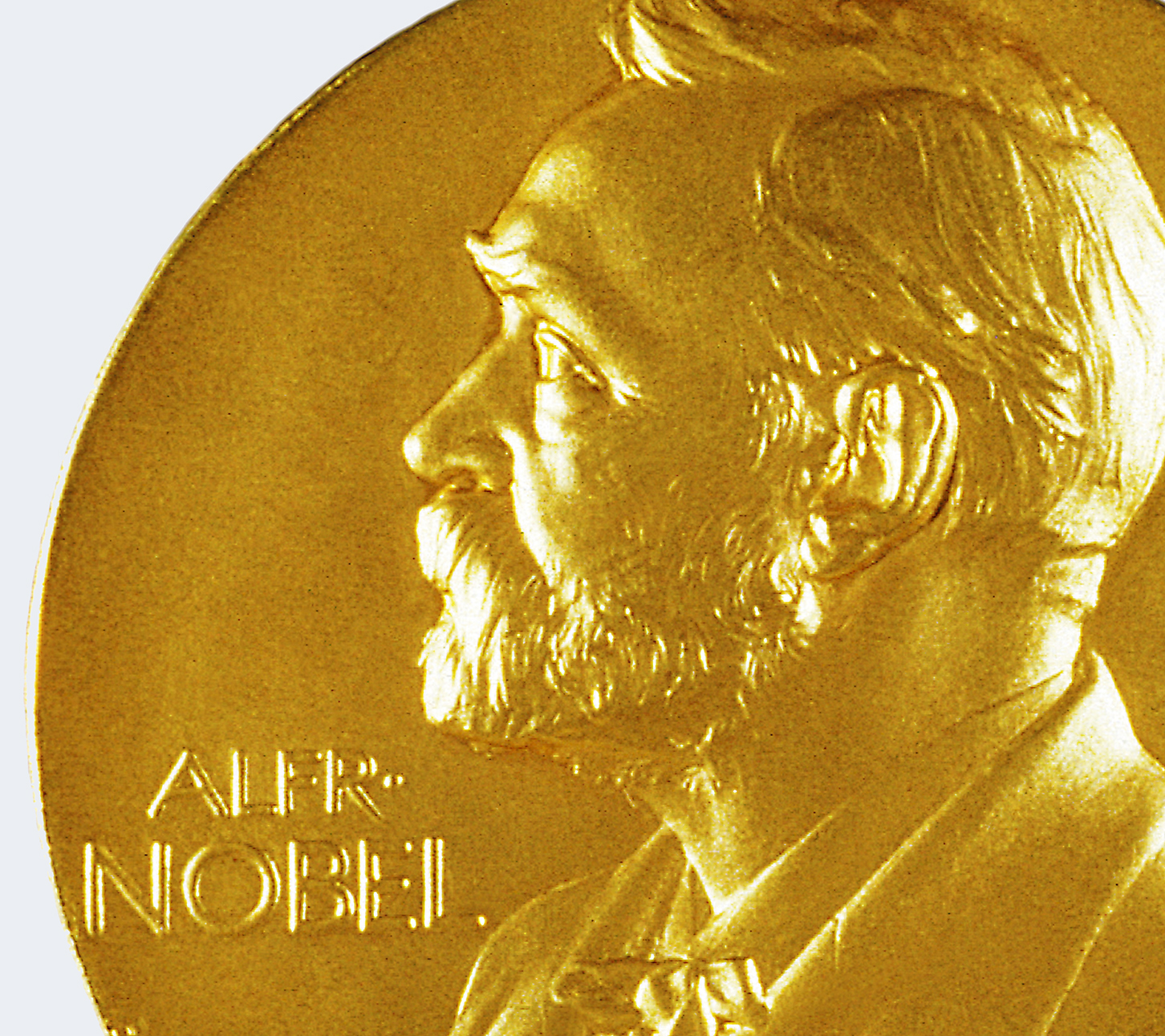The Royal Swedish Academy of Sciences has decided to award the Nobel Prize in Physics 2023 to
Pierre Agostini, The Ohio State University, Columbus, USA,
Ferenc Krausz, Max Planck Institute of Quantum Optics, Garching and Ludwig-Maximilians-Universität München, Germany, and
Anne L’Huillier, Lund University, Sweden.
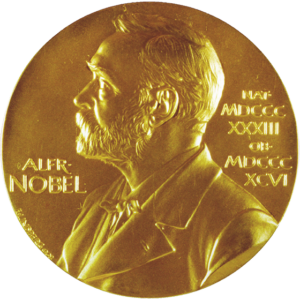
The three Nobel Laureates in Physics 2023 are being recognised for their experiments, which have given humanity new tools for exploring the world of electrons inside atoms and molecules. Pierre Agostini, Ferenc Krausz and Anne L’Huillier have demonstrated a way to create extremely short pulses of light that can be used to measure the rapid processes in which electrons move or change energy.
Fast-moving events flow into each other when perceived by humans, just like a film that consists of still images is perceived as continual movement. If we want to investigate really brief events, we need special technology. In the world of electrons, changes occur in a few tenths of an attosecond – an attosecond is so short that there are as many in one second as there have been seconds since the birth of the universe.
The laureates’ experiments have produced pulses of light so short that they are measured in attoseconds, thus demonstrating that these pulses can be used to provide images of processes inside atoms and molecules.
In 1987, Anne L’Huillier discovered that many different overtones of light arose when she transmitted infrared laser light through a noble gas. Each overtone is a light wave with a given number of cycles for each cycle in the laser light. They are caused by the laser light interacting with atoms in the gas; it gives some electrons extra energy that is then emitted as light. Anne L’Huillier has continued to explore this phenomenon, laying the ground for subsequent breakthroughs.
In 2001, Pierre Agostini succeeded in producing and investigating a series of consecutive light pulses, in which each pulse lasted just 250 attoseconds. At the same time, Ferenc Krausz was working with another type of experiment, one that made it possible to isolate a single light pulse that lasted 650 attoseconds.
The laureates’ contributions have enabled the investigation of processes that are so rapid they were previously impossible to follow.
“We can now open the door to the world of electrons. Attosecond physics gives us the opportunity to understand mechanisms that are governed by electrons. The next step will be utilising them,” says Eva Olsson, Chair of the Nobel Committee for Physics.
There are potential applications in many different areas. In electronics, for example, it is important to understand and control how electrons behave in a material. Attosecond pulses can also be used to identify different molecules, such as in medical diagnostics.
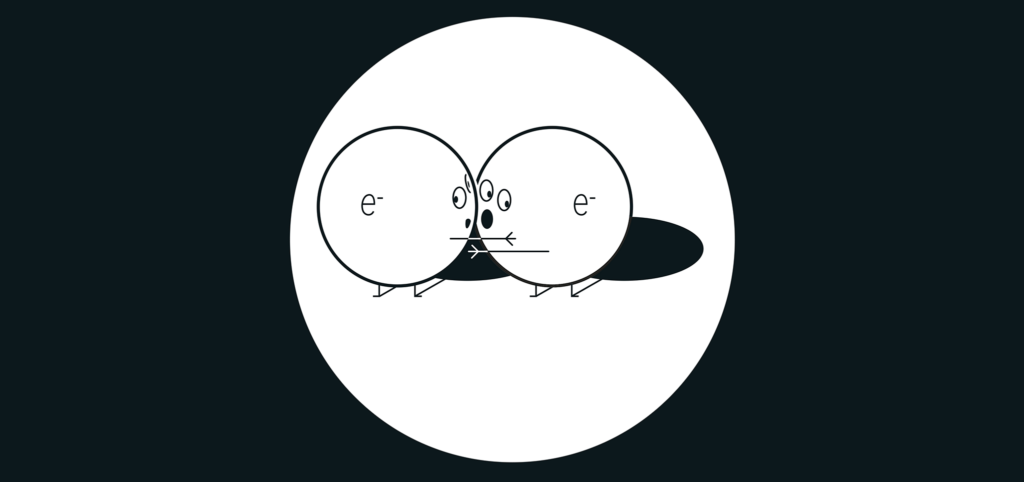
Laureates
Pierre Agostini, born 1941 in Tunis, Tunisia. PhD 1968 from Aix-Marseille University, France. Professor at The Ohio State University, Columbus, USA.
Pierre Agostini, The Ohio State University
Ferenc Krausz, born 1962 in Mór, Hungary. PhD 1991 from Vienna University of Technology, Austria. Director at Max Planck Institute of Quantum Optics, Garching and Professor at Ludwig-Maximilians-Universität München, Germany.
Ferenc Krausz, Max Planck Institute of Quantum Optics
Anne L’Huillier, born 1958 in Paris, France. PhD 1986 from University Pierre and Marie Curie, Paris, France. Professor at Lund University, Sweden.
Anne L’Huillier, Lund University
Prize amount: 11 million Swedish kronor, to be shared equally between the laureates.
Documents
The illustrations are free to be used by media for news reporting about the Nobel Prizes and the Prize in Economic Sciences, individual teachers and educators for educational purposes, individual researchers for research purposes, or private individuals for personal, non-commercial use. No modifications are allowed, and “©Johan Jarnestad/The Royal Swedish Academy of Sciences” must be noted. Commercial use for advertising purposes is not permitted.
For other uses, permission from the Royal Swedish Academy of Sciences is required. To apply for permission, please use the Academy’s contact form
Contacts
Press contact
Eva Nevelius, Press Secretary, the Royal Swedish Academy of Sciences
+46 70 878 67 63, eva.nevelius@kva.se
Experts
Mats Larsson, the Nobel Committee for Physics, The Royal Swedish Academy of Sciences
+46 73 389 43 77, ml@fysik.su.se
Olle Eriksson, the Nobel Committee for Physics, The Royal Swedish Academy of Sciences
+46 70 425 07 77, olle.eriksson@physics.uu.se
Read more about the Nobel Prize
The official Nobel Prize website
The Royal Swedish Academy of Sciences, founded in 1739, is an independent organisation whose overall objective is to promote the sciences and strengthen their influence in society. The Academy takes special responsibility for the natural sciences and mathematics, but endeavours to promote the exchange of ideas between various disciplines.
Nobel Prize® and the Nobel Prize® medal design mark are registered trademarks of the Nobel Foundation.
Photos from the press conference
